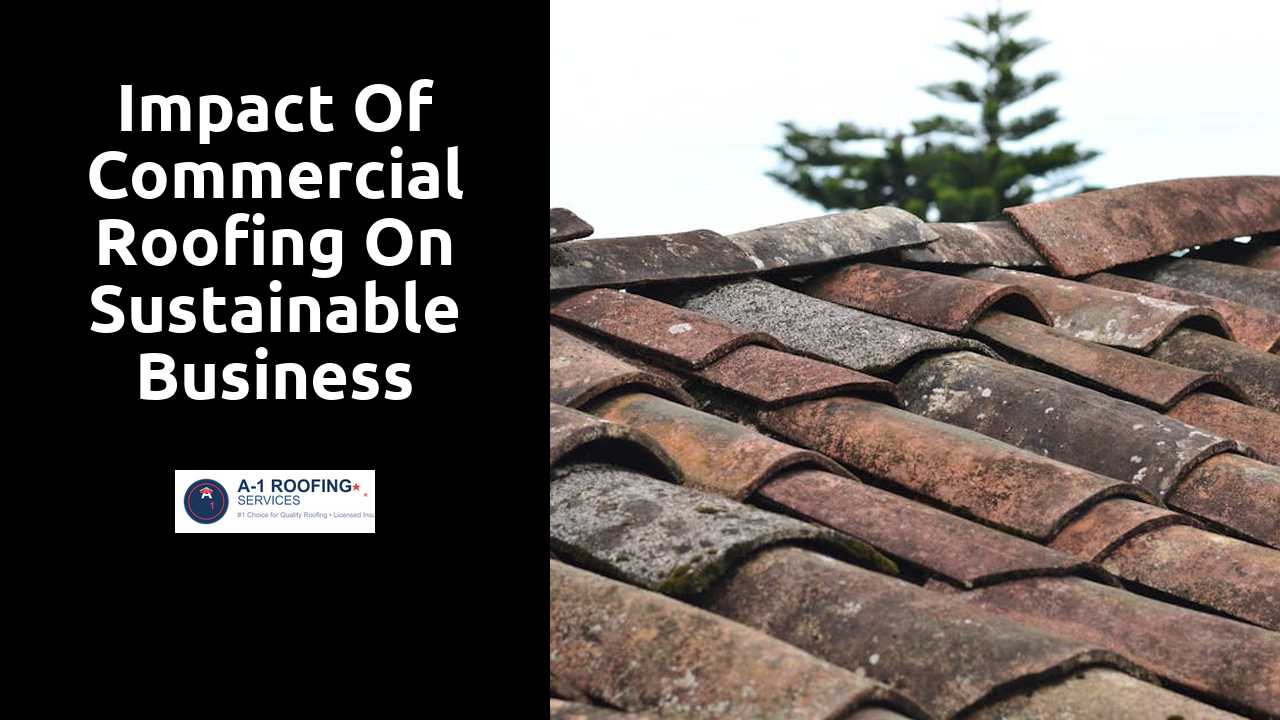
Impact of Commercial Roofing on Sustainable Business Practices
Table Of Contents
Stormwater Management through Roofing Designs
Effective stormwater management is crucial in urban areas where impervious surfaces can lead to increased runoff. Innovative roofing designs play a significant role in mitigating this challenge. Features such as sloped roofs and dedicated drainage systems can efficiently channel rainwater, reducing the risk of flooding. Additionally, systems that collect and redirect stormwater can be integrated into the roofing structure, allowing for better management of excess rainwater while minimizing strain on municipal systems.
Incorporating green roofs into commercial buildings further enhances stormwater management efforts. These systems absorb rainfall, providing natural filtration that reduces runoff quantities. They also promote biodiversity by creating habitats for various species while improving air quality. This multifaceted approach supports both environmental sustainability and long-term building resilience, ultimately benefiting businesses and the communities in which they operate.
Click here for additional info.
Green Roofs and Their Benefits
Green roofs serve as an innovative solution to urban environmental challenges. By integrating vegetation into building designs, they provide numerous benefits including improved air quality, reduced urban heat islands, and enhanced biodiversity. These living roofs act as natural insulators, helping to regulate indoor temperatures. This insulation decreases the need for air conditioning and heating, translating to energy savings and lower utility costs for businesses.
In addition to their environmental advantages, green roofs contribute positively to the overall aesthetic of urban spaces. They create serene landscapes that can be enjoyed by both occupants and the surrounding community. Businesses that incorporate green roofs can enhance their brand image, showcasing a commitment to sustainability and environmental stewardship. Such practices not only attract eco-conscious customers but also foster a sense of community engagement as green roofs can serve as community spaces or educational hubs on environmental issues.
Enhancing a Business’s Corporate Social Responsibility
Businesses are increasingly recognizing the importance of corporate social responsibility (CSR) in their operations. Implementing sustainable roofing solutions can significantly enhance a company's reputation and commitment to environmental stewardship. By choosing materials and designs that minimize ecological impact, companies can demonstrate their responsible approach, attracting customers who prioritize sustainability. This focus on environmentally friendly practices also fosters stronger relationships with stakeholders, including employees and the community.
Additionally, incorporating sustainable roofing options can lead to long-term financial benefits. Reduced energy costs from enhanced insulation and reflective materials contribute to overall savings. These savings can then be reinvested into further sustainable initiatives or community projects, amplifying the positive impact on society. Companies that align their roofing strategies with broader environmental goals not only improve their operational efficiency but also position themselves as leaders in promoting sustainable business practices.
Roofing Projects that Promote Community Health
The design and implementation of roofing projects can significantly enhance community health by contributing to urban aesthetics and environmental quality. Green roofs, for instance, act as a natural barrier that absorbs rainwater and reduces runoff, which can help prevent flooding and manage stormwater in densely populated areas. These projects also facilitate improved air quality by filtering pollutants and absorbing carbon dioxide, ultimately leading to a healthier urban living environment.
Additionally, incorporating native vegetation into roofing systems promotes biodiversity, creating habitats for various species while offering residents green spaces to engage with. Such initiatives can foster community interaction, encouraging a sense of place and ownership. Moreover, access to green spaces has been linked to mental health benefits, as they provide areas for relaxation and recreation amid urban settings, enhancing overall well-being for community members.
Optimization of Energy Resources
Roofing systems play a vital role in the overall energy efficiency of a building. Modern materials and designs can significantly reduce heat absorption, leading to lower energy consumption for heating and cooling. The selection of reflective materials, for instance, helps decrease the urban heat island effect. This, in turn, can lower energy costs for businesses while contributing to a more sustainable urban environment.
Additionally, integrating advanced technologies into roofing solutions can further optimize energy resources. Installation of solar panels on rooftops allows businesses to harness renewable energy, reducing dependency on fossil fuels. The dual function of roofs—protecting buildings while generating energy—illustrates an innovative approach to resource management. By investing in such technologies, companies not only meet their operational needs but also support broader sustainability goals.
Integrating Solar Solutions into Roofing
The integration of solar solutions into roofing systems represents a significant step towards sustainability for commercial buildings. By incorporating solar panels into rooftop designs, businesses can harness renewable energy directly from their properties. This not only reduces reliance on fossil fuels but also leads to substantial savings on energy costs over time. Additionally, advancements in solar technology allow for more efficient energy conversion, making it a viable option for a greater number of businesses.
Installing solar solutions can also enhance a company’s image as a leader in environmental stewardship. Customers increasingly prefer brands that prioritize sustainability, which can foster loyalty and attract new clientele. Furthermore, the presence of solar installations may qualify businesses for various incentives, such as tax credits and rebates, providing financial motivations for adoption. Overall, integrating solar technology with commercial roofing not only addresses immediate energy needs but also contributes to long-term ecological benefits.
Related Links
Tax Incentives for Upgrading Commercial Roofing SystemsImproved Energy Efficiency through Commercial Roofing Designs